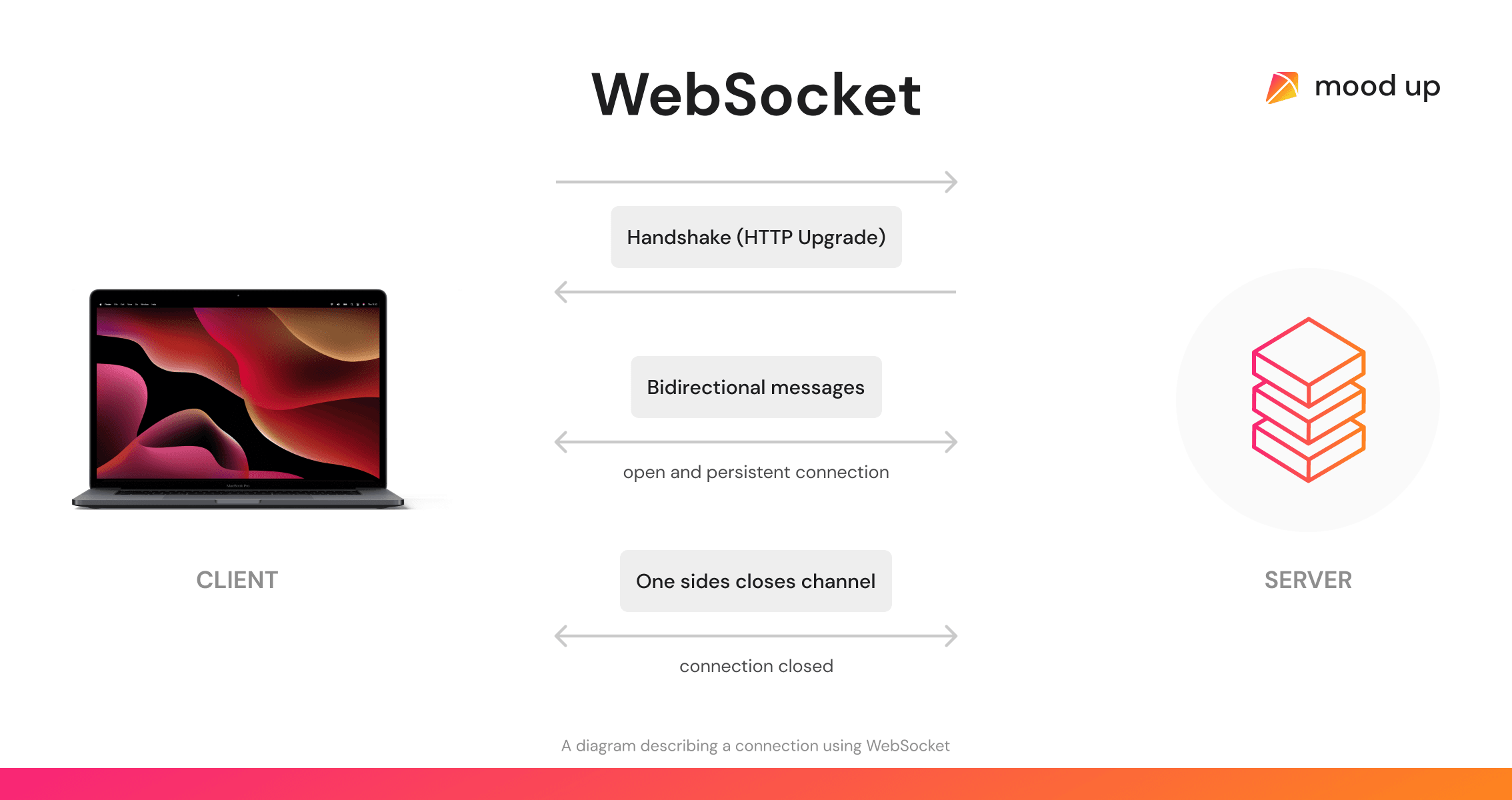WebSocket Protocol: What Is It? What Are the Use Cases?
How does WebSocket Communication differ from traditional HTTP requests? How does the WebSocket connection work? Read the following article to find answers to these and more questions about WebSocket protocol.
Introduction - Before We Delve into WebSocket Communication and Use Cases
WebSocket communication has emerged as a powerful tool in the realm of web and mobile app development, enabling real-time interaction and data exchange between the client and the server. In this blog post, we'll delve into the world of WebSocket communication, shedding light on its significance for web applications, its benefits, and the myriad of possibilities it offers for crafting seamless mobile applications.
Understanding WebSocket Communication
WebSocket communication is a protocol that facilitates two-way communication channels between the clients (typically web browsers or mobile apps) and servers. Unlike traditional HTTP requests, which are unidirectional and require a new request for each server response, WebSocket communication establishes a persistent connection, enabling real-time data exchange. This continuous connection minimizes latency and enhances the user experience by enabling instant updates and interactions.
WebSocket - a Simple Scheme to Grasp the Idea

Where You Encounter WebSocket Communication
WebSocket communication finds its applications in various domains, offering a wide array of benefits:
- Real-Time Messaging: Mobile chat applications, social media platforms, and collaborative tools rely on WebSocket communication to deliver instant message notifications and updates.
- Live Feeds and Notifications: News apps, sports updates, and financial platforms use WebSockets to deliver real-time data, ensuring users receive the latest information as it happens.
- Online Gaming: Multiplayer mobile games leverage WebSocket communication to synchronize game states, actions, and interactions among players, creating immersive gaming experiences.
- Collaborative Applications: WebSocket enables seamless collaboration in apps, allowing multiple users to interact and edit shared content simultaneously, as seen in document editing and project management tools.
- IoT Applications: In mobile apps connected to Internet of Things (IoT) devices, WebSocket communication ensures timely updates and control over IoT devices from anywhere.
The Significance of WebSocket in Real-Time Notifications
Without WebSocket communication, notifications involve the client frequently asking the server if there are new updates. This method, called polling, can lead to higher network traffic, delays, and increased resource usage. For the end user, it might mean a worse overall experience. WebSocket, on the other hand, provides a constant connection between the client and server, enabling instant updates to be pushed to the client as they happen, resulting in a more efficient and timely notification process.
Enhancing WebSocket Security
A crucial step towards fortifying the WebSocket security within applications involves implementing a strong authentication mechanism. WebSockets don't have any built-in authentication mechanism, so it's on us to take care of that. By authenticating the client prior to permitting actual WebSocket interaction, we establish a robust barrier that safeguards against potential vulnerabilities and unauthorized access attempts. This approach not only bolsters the integrity of our communication channels but also reinforces the overall security posture of our application, providing a reliable shield against potential threats. As such, requiring authentication for WebSocket communication is an important and non-negotiable component in the strategy to uphold the highest data protection and system security standards.
Importance of WebSocket Event Documentation
Clear documentation of WebSocket events is crucial in both initial implementation and ongoing development. Building on past experiences from other applications, creating such documentation becomes indispensable. It ensures smooth collaboration, accelerates troubleshooting, and empowers efficient feature expansion, enhancing the overall development process.
Conclusion
WebSocket communication has transformed the way we build mobile applications, opening doors to a realm of real-time interactions and dynamic experiences. Whether it's delivering instant messages, updating live feeds, enhancing gaming interactions, or enabling IoT connectivity, WebSocket empowers developers to create applications that engage users in new and exciting ways. As you embark on your mobile app development journey, consider the potential of this solution to elevate your app's functionality and user engagement to the next level.
January 05, 2024 / Posted by:
You May Also Like